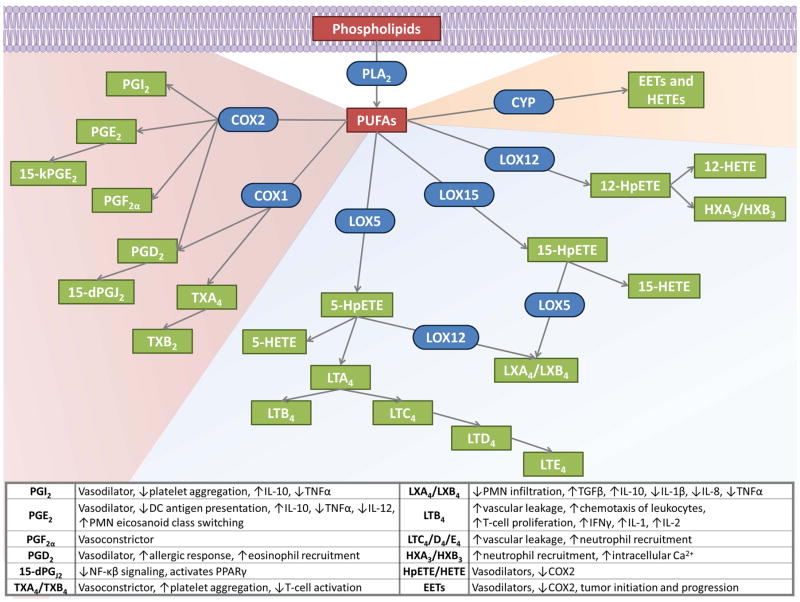Fig. 3.
Eicosanoid production and inflammatory roles. PUFAs, released from phospholipids by PLA2, are oxidized by three main pathways to form both pro- and anti-inflammatory eicosanoids. COX pathways to produce PGs and TXs are shown in the red-shaded region. LOX production of HETEs, HXs, LTs, and LXs are shown in the blue-shaded region. Cytochrome P450 (CYP) products are shown in the orange-shaded region. Substrates are red, products are green, and enzymes are blue and rounded. The table summarizes some of the discussed downstream pro- and anti-inflammatory effects of the eicosanoids.

